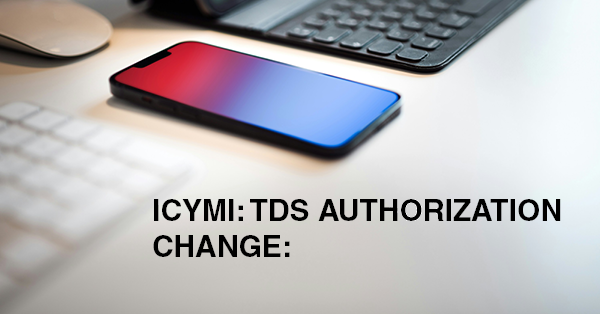EMPLOYEE RETENTION CREDIT – REVISITED:

A quick refresher on eligibility for the Employee Retention (Tax) Credit (ERC/ERTC): the credit is available to eligible employers that paid qualified wages to some or all employees after March 12, 2020, and before January 1, 2022. Eligibility and credit amount vary depending on when the business impacts occurred.
Generally, businesses and tax-exempt organizations that qualify are those that:
- Were shut down by a government order due to the COVID-19 pandemic during 2020 or the first three calendar quarters of 2021, or
- Experienced the required decline in gross receipts during the eligibility periods during 2020 or the first three calendar quarters of 2021, or
- Qualified as a recovery startup business for the third or fourth quarters of 2021
Eligible employers must have paid qualified wages to claim the credit and it cannot be the same wages used to qualify for the paycheck protection program loans (PPP Loan).
There has been some confusion and errors in claiming the ERTC based on the interruption of supply chain to the business. From Notice 2021-20 the following example was provided:
Question 12: If a governmental order causes the suppliers to a business to suspend their operations, is the business considered to have a suspension of operations due to a governmental order?
Answer 12: An employer may be considered to have a full or partial suspension of operations due to a governmental order if, under the facts and circumstances, the business’s suppliers are unable to make deliveries of critical goods or materials due to a governmental order that causes the supplier to suspend its operations. If the facts and circumstances indicate that the business’s operations are fully or partially suspended as a result of the inability to obtain critical goods or materials from its suppliers because they were required to suspend operations, then the business would be considered an eligible employer for calendar quarters during which its operations are fully or partially suspended and may be eligible to receive the employee retention credit.
Example: Employer A operates an auto parts manufacturing business. Employer A’s supplier of raw materials is required to fully suspend its operations due to a governmental order. Employer A is unable to procure these raw materials from an alternate supplier. As a consequence of the suspension of Employer A’s supplier, Employer A is not able to perform its operations for a period of time. Under these facts and circumstances, Employer A would be considered an eligible employer during this period because its operations have been suspended due to the governmental order that suspended operations of its supplier.
In response to the abuse of the ERTC under the “supply chain” exemption, the IRS Office of Chief Counsel released a memorandum on July 21, 2023, addressing “Whether an Employer Experienced a Full or Partial Suspension of the Operation of a Trade or Business under Section 2301 of the Coronavirus Aid, Relief, and Economic Security Act or Section 3134 of the Internal Revenue Code due to a Supply Chain Disruption.”
When determining eligibility and an employer’s ability to qualify for the ERC based on supply chain disruption issues, some of the following criteria must be met:
To provide the necessary documentation and evidence to prove eligibility based on supply chain disruptions to defend an ERC claim, the employer must be able to present:
- Specific government orders: Documentation that proves the existence of relevant government orders imposed on a supplier or business that affected the supply chain.
- Issues caused for the supplier: Evidence illustrating how the government orders or other issues directly caused challenges for the supplier, forcing the supplier to suspend operations.
- Inability to obtain critical supplies: Documentation indicating the employer’s inability to procure critical and necessary supplies due to the issues faced by the supplier.
- Impact on the employer’s business: Clear documentation showcasing how these supply chain issues led to a full or partial suspension of the employer’s own business operation.
If you suspect that a taxpayer may have received the ERTC and did not qualify, there is still significant discussion on how this is to be handled by the tax professional. The IRS had issued a statement with the following directive:
II. Tax Professionals’ Role in ERC Compliance
The IRS's outreach efforts to employers about possible excessive ERC claims have prompted requests from tax practitioners for the IRS-and, in particular, the Office of Professional Responsibility (OPR)-to provide guidance on their professional responsibility obligations in connection with clients ERC claims, including prior federal tax returns claiming the ERC that the practitioners did not themselves prepare.
To fulfill their professional obligations to clients and to tax administration, practitioners -attorneys, certified public accountants, and enrolled agents-must meet the applicable provisions in Circular 230, Regulations Governing Practice before the Internal Revenue Service 31 CFR Subtitle A, Part 10). Circular 230 which he OPR administers and enforces, has several provisions that are implicated when dealing with a client who has claimed or is seeking to claim an ERC.
A. Diligence as to Accuracy
Section 10.22(a) of Circular 230 requires a practitioner to exercise due diligence in preparing and filing tax returns or other documents on a client's behalf with the IRS and in ensuring the correctness of the practitioner's written or oral representations to clients and the IRS. Practitioners who prepare income, employment, and other tax returns for clients have a duty of due diligence to inquire of their clients with sufficient data I to ascertain the information necessary to determine clients eligibility for the ERC and to claim the proper amount of the ERC on the clients returns.
For purposes of exercising due diligence, section 10.34(d) allows a practitioner to gene ally rely in good faith and without verification, on information from the client. Good-faith reliance however, contemplates that a practitioner will make reasonable inquiries of a client to confirm eligibility for the ERC and to determine the correct amount of the credit. A practitioner may accept the clients responses at face value if it is reasonable. But a practitioner may not ignore the implications of information the practitioner knows or has received from the client, If the information from the client appears to be incorrect, incomplete or inconsistent with other facts the practitioner knows, the practitioner cannot simply accept the client's information but must make further inquiries of the client to reconcile the incomplete, incorrect, or inconsistent facts.
If the practitioner cannot reasonably conclude (consistent with the standards discussed in this guidance) that the client is or was eligible to claim the ERC, then the practitioner should not prepare an original or amended return that claims or perpetuates a potentially improper credit.
Additionally if a practitioner learns that a current client did not comply with the ERC requirements in a prior ax year, the practitioner must, under section 10.21, promptly inform the client of the noncompliance, error, or omission and any penalty or penalties that may apply.
The misleading “You may be eligible for the ERC” claim
The IRS has observed a significant increase in false Employee Retention Credit (ERC) claims. The ERC, sometimes also called the Employee Retention Tax Credit or ERTC, is a pandemic-related credit for which only select employers qualify.
Scam promoters are luring people to improperly claim the ERC with “offers” online, in social media, on the radio, or through unsolicited phone calls, emails and even mailings that look like official government letters but have fake agency names and usually urge immediate action. These unscrupulous promoters make false claims about their company’s legitimacy and often don’t discuss some key eligibility factors, limitations and income tax implications that affect an employer’s tax return. It’s important to watch for warning signs such as promoters who say they can quickly determine someone’s eligibility without details, and those who charge up-front fees or a fee based on a percentage of the ERC claimed.
Anyone who improperly claims the ERC must pay it back, possibly with penalties and interest.
False ERC claims were so widespread this year that the IRS added them to its annual Dirty Dozen list of tax scams. Details about eligibility, how to properly claim the credit, and how to report promoters are available at IRS.gov/erc.
Note from the Editor: At the IRS National Tax Forums, this is still an active discussion on the role and responsibility of the professional tax preparer. Some of the information provided in New Orleans was inconsistent with the IRS position. The common interpretation, if you suspect the taxpayer was not eligible to receive the ERTC, do not prepare an amended return to reflect the reduction in payroll expenses for the applicable years. The IRS is actively auditing in this area.




